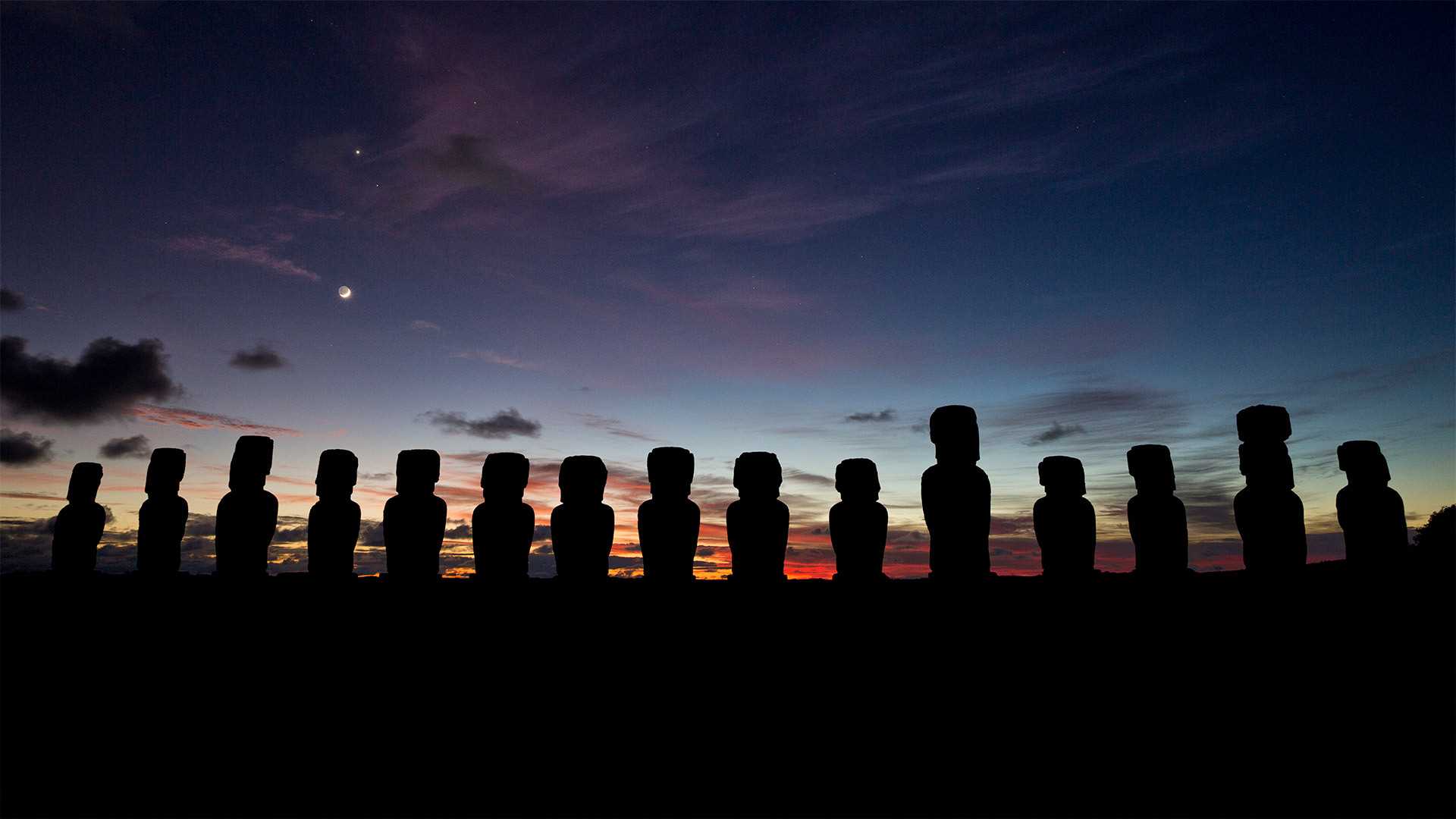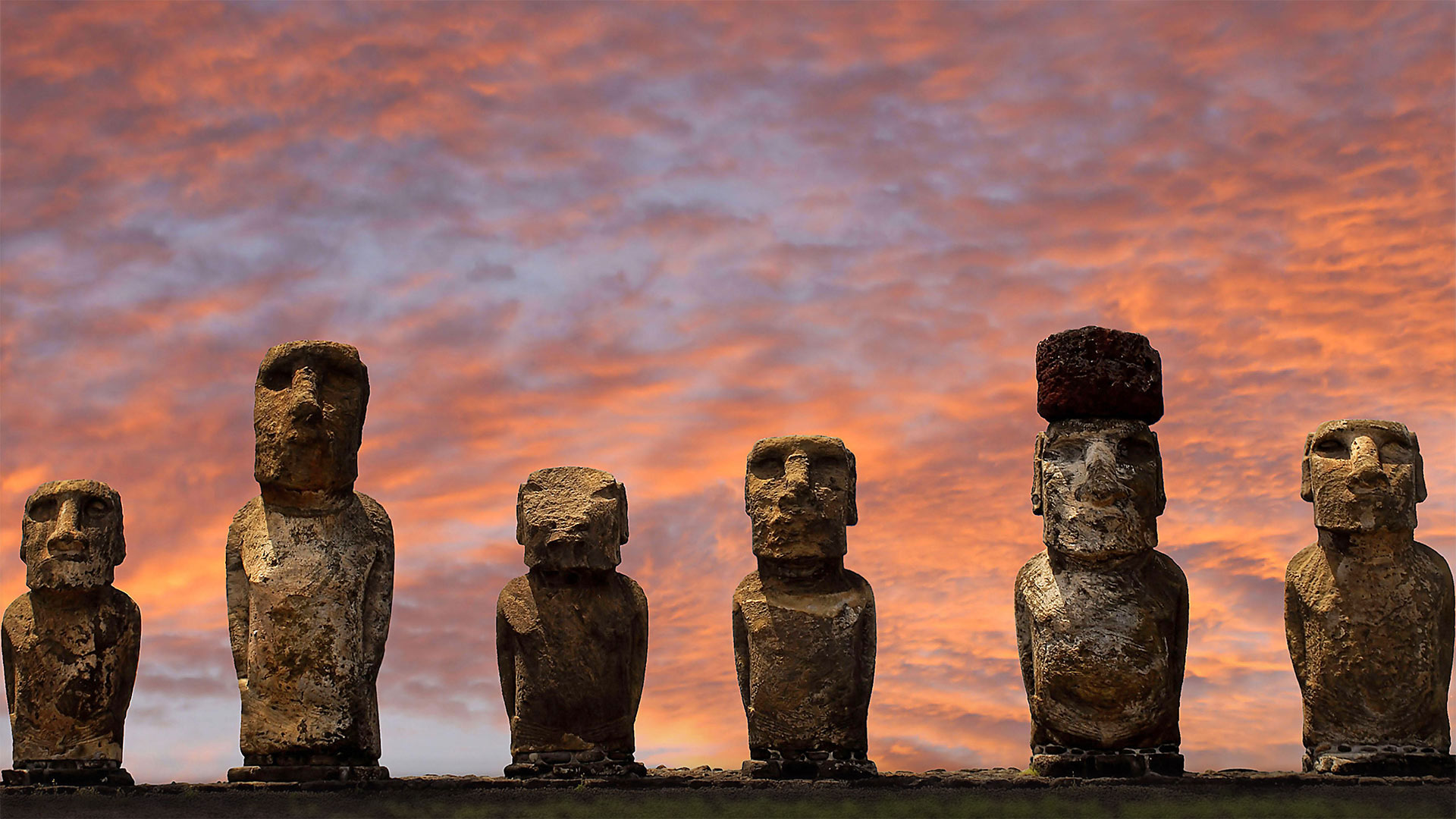标签 复活节岛 下的文章
复活节岛上的摩艾石像,智利 Moai statues on Easter Island, Chile (© Karine Aigner/Tandem Stills + Motion)

复活节岛上的摩艾石像,智利 Moai statues on Easter Island, Chile (© Karine Aigner/Tandem Stills + Motion)
摩艾石像 Big rocks, big heads
摩艾石像,智利
今天,照片上呈现的是久负盛名的摩艾石像,它位于智利偏远的复活节岛上。这些巨人石像是由拉帕努伊人在1250年到1500年之间用岩石雕刻而成的,全岛共有近1000座石像。考古学家认为,拉帕努伊人用这些石像纪念他们的祖先,并将其视为权力和权威的象征。这些石像里有7座面朝大海,其余石像都是背对着太平洋,面朝内陆看着村庄,仿佛是在保护着拉帕努伊人。
Moai statues on Easter Island, Chile
Today we're looking at something you may have heard about before—the famous Moai statues on Chile's remote Easter Island. These big-headed statues were carved out of solidified volcanic ash by the Rapa Nui people between 1250 and 1500, and there are nearly 1,000 of them on the island. Archaeologists believe they were meant to honor Rapa Nui ancestors and were revered as symbols of power and authority. All but seven of the statues face away from the surrounding Pacific Ocean, and instead look inward toward the villages, as if positioned to watch protectively over the Rapa Nui.
拉帕努伊国家公园中阿胡汤加里基的摩艾石像,智利复活节岛 Moai statues at Ahu Tongariki in Rapa Nui National Park, Easter Island, Chile (© blickwinkel/Alamy)

拉帕努伊国家公园中阿胡汤加里基的摩艾石像,智利复活节岛 Moai statues at Ahu Tongariki in Rapa Nui National Park, Easter Island, Chile (© blickwinkel/Alamy)
The 'moai' you know
Roam around the tiny, remote Easter Island and you'll find almost 900 of the stern stone faces called moai. They seem ancient as the pyramids, even a little alien, but they were actually sculpted between 500 and 800 years ago from compacted volcanic ash that's as terrestrial as it comes. You're seeing six of the 15 moai that stand on Ahu Tongariki, the largest ahu (stone platform) on the island. These statues were toppled in the 18th or 19th century along with other moai island-wide for reasons not fully known to scholars, though earthquakes or possible tribal infighting are postulated. The statues were later buried by a tidal wave and lay in ruins until the 1990s when they were excavated and placed back on the ahu.
Though scholars still debate how and why the moai were constructed and moved into place, it's known that they represent the ancestors of the Rapa Nui, an isolated and hardy culture that still celebrates its uniqueness. Visit Easter Island during the first two weeks of February and you'll find yourself in the midst of Tapati Rapa Nui, a festival that revives islander ceremonies of song and dance, as well as sporting events like ocean canoeing, horse racing, and haka pei (high-speed sledding on banana tree trunks).